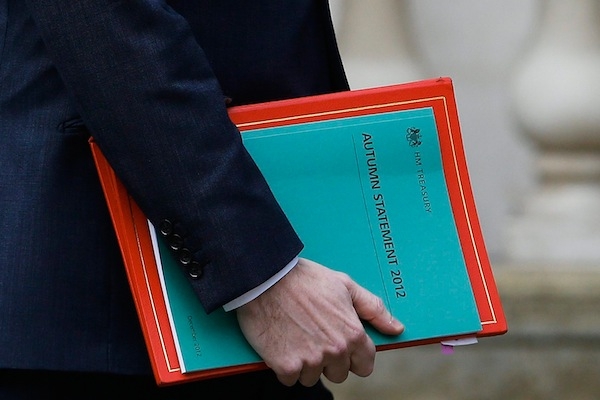1. Growth evaporating. The Office for Budget Responsibility once again downgraded its growth forecasts for 2012-13 and, for the first time, also did so for 2014-16. Despite that, the OBR is still slightly more optimistic than the average independent forecaster:
2. A seven year slump. On the OBR forecasts, it will now take until the end of 2014 to get back to where we were before the crash. In the 1930s, it took ‘just’ four years to recover:
3. Slower deficit reduction. The weaker economic outlook means the government will be borrowing more than expected. When George Osborne delivered his first Budget in 2010, the OBR predicted he’d get the deficit down to £20 billion in 2015-16. It now says it’ll be £82 billion. The OBR does show the deficit falling this year, but only by the narrowest of margins: from £121.4 billion to £120.3 billion. And it’s worth noting that without either the £3.5 billion from the 4G auction or the OBR’s projection of £7.5 billion underspending by departments, the deficit would be rising this year. And it still might, as that £1.1 billion drop is well within the margin of error on their forecasts.
4. Meeting the fiscal mandate… The OBR has Osborne on track to meet his main fiscal rule: eliminating the structural current budget deficit within five years.
5. …but missing the debt target. But the Chancellor now looks likely to miss his supplementary target: to have the debt-to-GDP ratio falling in 2015-16. The OBR says it won’t start to come down until a year later.
6. 2013: a year of bad jobs figures. The last year has brought fairly good news on employment, with half a million new jobs and unemployment falling steadily from 2.7 to 2.5 million. But don’t expect it to keep coming next year. The OBR forecasts that employment will stay roughly flat until 2014, and a growing population means that unemployment will rise back up to 2.7 million. Even in 2018, the OBR expects 2.2 million people to be unemployed: 600,000 more than in 2008. Incidentally, it forecasts that government will shed 1.1 million jobs between 2010-11 and 2017-18, while the market sector adds 2.4 million.
7. The income squeeze goes on. Real earnings have fallen by 7 per cent since the recession hit, and won’t start to recover until 2014 according to the OBR. Relative to the Consumer Prices Index, they won’t recover to 2007 levels until 2018 – and relative to the Retail Prices Index they’ll barely have grown at all by then, still 6 per cent below pre-crash levels.













Comments